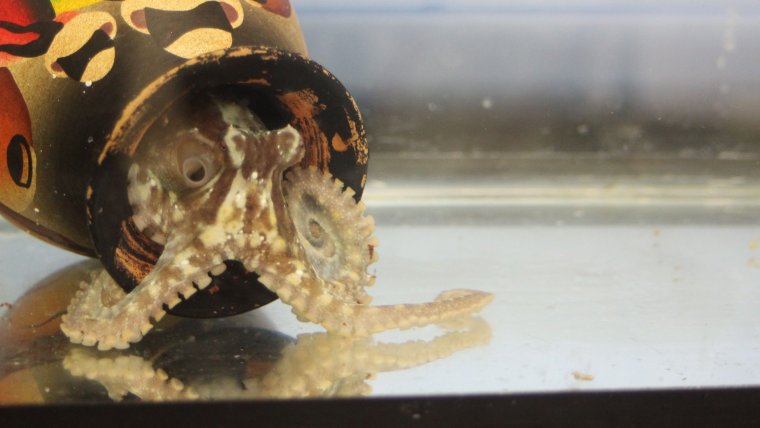| News / Science News |
First-ever octopus genome sequenced
NSF | SEPTEMBER 28, 2015
In the first-ever sequencing of the entire octopus genome, researchers discovered unusual features that shed light on octopus evolution and biology, and set the stage for future studies on complex nervous system development.

A young California two-spot octopus, Octopus bimaculoides, emerges from her den. ![]()
The research reveals striking differences between genome of the octopus and other invertebrates. Those include huge expansions in two families of genes previously thought to be unique to vertebrates, and a complex gene arrangement.
The researchers mapped gene expression profiles in 12 different tissues, and identified 33,000 protein-coding genes, which puts the octopus genome at slightly smaller in size than the human genome.
Octopuses are cephalopods, a class of marine invertebrates with an evolutionary history spanning more than 500 million years. They have some of the most sophisticated behaviors in the animal kingdom: large, highly-developed brains capable of learning and problem-solving.
One of biggest surprises in the octopus genome was the expansion of two gene families, including the protocadherins, which regulate neuronal development. It was previously thought that only vertebrates possessed numerous and diverse protocadherins; they are crucial in setting up the wiring of the mammalian nervous system. The researchers found that protocadherins are 10 times more common in octopus genes than in mammals.
The other gene family, zinc-finger transcription factors, play a role in nervous system function and development. The octopus genome has 1,800 of these transcription factors--the second-largest gene family discovered so far in animals.
YOU MAY ALSO LIKE




